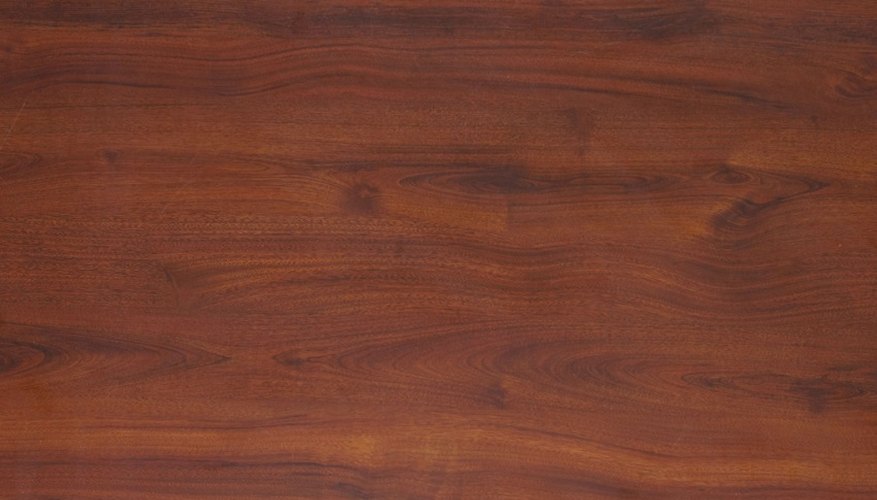Liquid deglosser is a solvent that dulls a glossy painted surface, so it can be repainted without the time consuming job of hand sanding. It is also called "liquid sandpaper." There are some inexpensive cleaning products that do just as good a job of deglossing paint, and some tricks for using both to save time.
Types
All liquid deglossers contain strong solvents like naphtha and toluene that soften hard, glossy paint, providing "tooth" for a fresh coat of paint to stick to. Heavy-duty cleaners like trisodium phosphate (TSP) and TSP substitutes are also very effective deglossers.
Function
When painting latex over glossy oil based paint, the underlying glossy surface needs to be dulled so the new paint will adhere tightly. Sanding by hand achieves this, but can be very time consuming, particularly on detailed surfaces like ornate wood trim and panel doors. Liquid deglossers quickly penetrate nooks and crannies, needing only to be wiped on with a rag. Most deglossers will remove some surface dirt and oil as well.
- When painting latex over glossy oil based paint, the underlying glossy surface needs to be dulled so the new paint will adhere tightly.
- Sanding by hand achieves this, but can be very time consuming, particularly on detailed surfaces like ornate wood trim and panel doors.
Considerations
Liquid deglosser is liberally applied with a soft rag, then wiped off with a dry rag. To smooth out a surface as well as degloss it before painting, try this trick: Use fine steel wool or a flexible sanding pad dipped in the deglosser to apply it, then wipe it off. Older oil based paints applied before 1980 are very likely to contain lead, and dry--sanding it creates potentially toxic dust. Wet-sanding with deglosser virtually eliminates the dust. While solvent deglossers do not have to be rinsed off, cleaning deglossers like TSP must be thoroughly rinsed prior to painting.
- Liquid deglosser is liberally applied with a soft rag, then wiped off with a dry rag.
- While solvent deglossers do not have to be rinsed off, cleaning deglossers like TSP must be thoroughly rinsed prior to painting.
Warning
Solvent fumes can be very strong, so only use liquid deglossers in a well ventilated area, or wear an OSHA-approved respirator and eye protection. Used rags can spontaneously combust and must be left out to dry before disposing of, or put into a bucket of water. Never pile solvent--soaked rags in a closed, airtight space.
Misconceptions
Even though the product is sometimes called liquid "sander," it doesn't really function the same way as sandpaper does. It is only for removing gloss from painted surfaces. Liquid deglossers will not make the surface smoother--for that you need sandpaper. They will not work on other shiny surfaces like metal or tile as a paint prep. Liquid deglossers are basically a weak version of paint removers and work by softening the paint.
- Even though the product is sometimes called liquid "sander," it doesn't really function the same way as sandpaper does.
- Liquid deglossers will not make the surface smoother--for that you need sandpaper.
Expert Insight
To both smooth and degloss old paint, use a flexible sanding sponge instead of a rag over the entire surface to be painted, then wipe it off using clean rags, turning them frequently. Make sure the surface is completely dry before painting.
